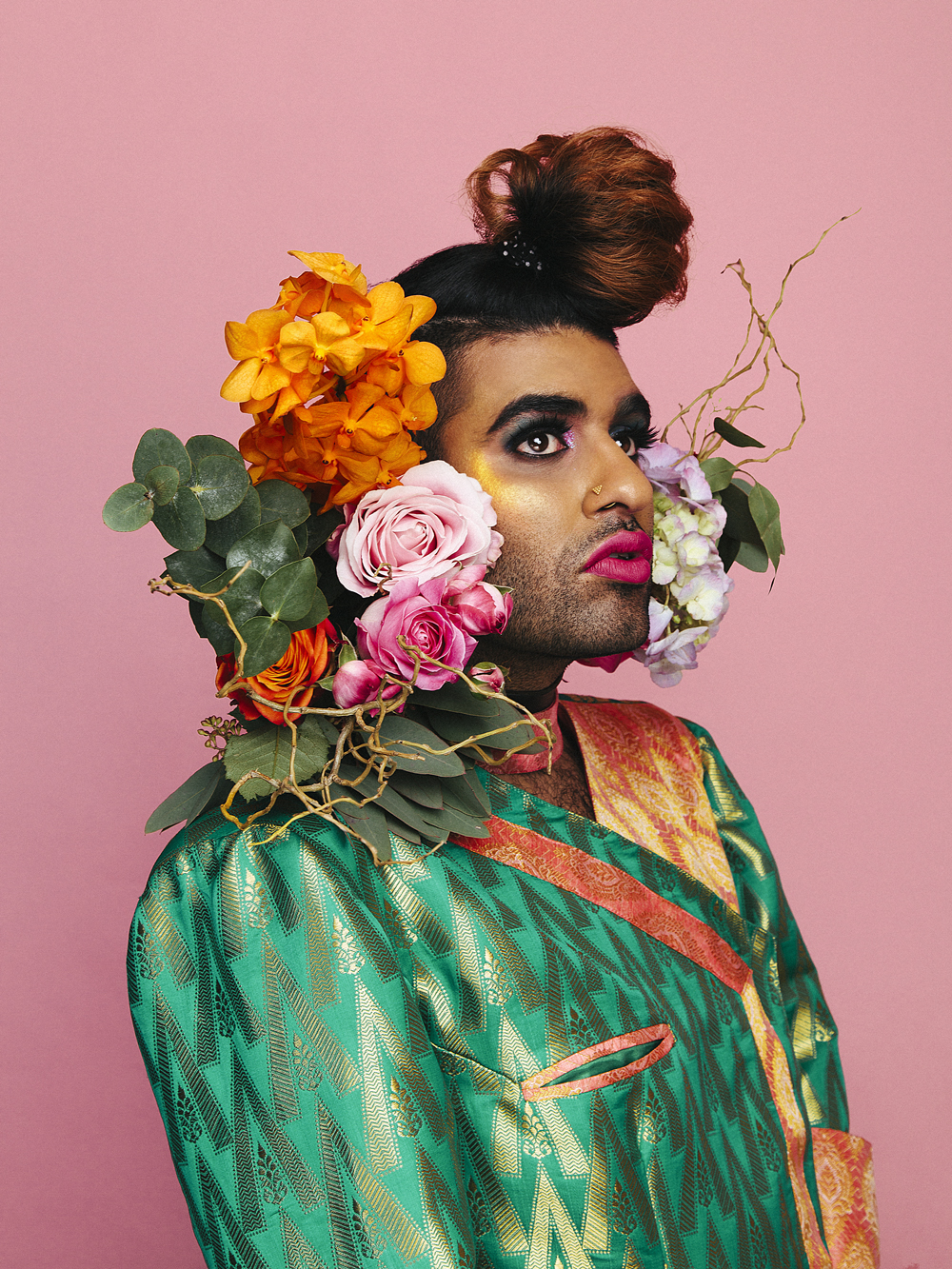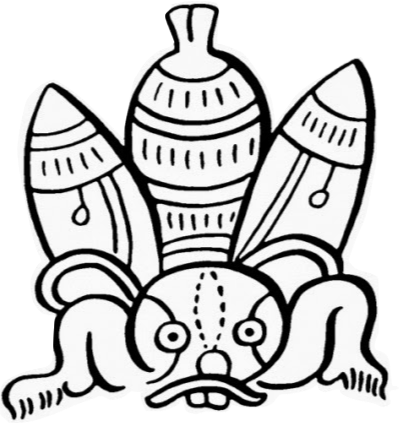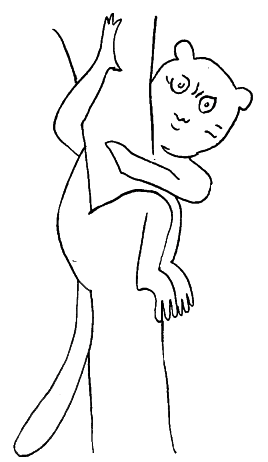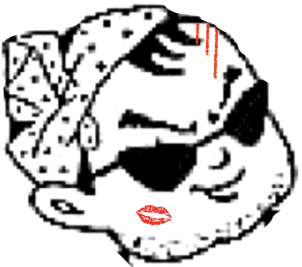
ジェンダーの多様性
Alok Vaid-Menon, a gender non-conforming writer, performance artist, and activist
★ジェ ンダーの多様性またはジェンダーの非順守とは、男性または女性のジェンダー規範に一致しない個人の行動またはジェンダー表現を指す。ジェンダー規範に合わ ない人格は、トランスジェンダーまたは非二元性である場合、またはシスジェンダーである場合がある。トランスジェンダーの場合、性別移行前はジェンダー規 範に合わないと認識される、または自らをそう認識している場合があるが、性別移行後はそう認識されない場合がある。性別移行後にジェンダー規範に合わない ように見えるトランスジェンダーの成人は、トランスジェンダーに対する差別を経験する可能性が高い。[1](→もともと「老年多様性」から派生しました)。
☆ジェンダー・トラブルの
ポータルサイトはこちらからリンクします!!!
| Gender variance or gender nonconformity is behavior or gender expression by an individual that does not match masculine or feminine gender norms. A gender-nonconforming person may be variant in their gender identity, being transgender or non-binary, or they may be cisgender. In the case of transgender people, they may be perceived, or perceive themselves as, gender-nonconforming before transitioning, but might not be perceived as such after transitioning. Transgender adults who appear gender-nonconforming after transition are more likely to experience transphobic discrimination.[1] | ジェ ンダーの多様性またはジェンダーの非順守とは、男性または女性のジェンダー規範に一致しない個人の行動またはジェンダー表現を指す。ジェンダー規範に合わ ない人格は、トランスジェンダーまたは非二元性である場合、またはシスジェンダーである場合がある。トランスジェンダーの場合、性別移行前はジェンダー規 範に合わないと認識される、または自らをそう認識している場合があるが、性別移行後はそう認識されない場合がある。性別移行後にジェンダー規範に合わない ように見えるトランスジェンダーの成人は、トランスジェンダーに対する差別を経験する可能性が高い。[1] |
| Terminology People who exhibit gender variance may be called gender-variant, gender-nonconforming, gender-diverse, or gender-atypical.[2] The terms gender variance and gender-variant are used by scholars of psychology,[3][4][5] psychiatry,[6] anthropology,[7] and gender studies, as well as advocacy groups of gender-variant people themselves.[8] The term gender-variant is deliberately broad, encompassing such specific terms as transsexual, butch and femme, queen, sissy, tomboy, femboy, travesti, or hijra. The word transgender usually has a narrower meaning and different connotations, including an identification that differs from the gender assigned at birth. GLAAD (formerly the Gay and Lesbian Alliance Against Defamation)'s Media Reference Guide defines transgender as an "umbrella term for people whose gender identity or gender expression differs from the sex they were assigned at birth."[9] Not all gender-variant people identify as transgender, and not all transgender people identify as gender-variant – many identify simply as men or women.[5] Gender identity is one's internal sense of their own gender; while most people have a gender identity of a boy or a man, or a girl or a woman, gender identity for other people is a more complex experience. Furthermore, gender expression is the external manifestation of one's gender identity, usually through "masculine", "feminine", or gender-variant presentation or behavior.[9] |
用語 ジェンダーの多様性を示す人々は、ジェンダー・ヴァリアント、ジェンダー・ノンコンフォーミング、ジェンダー・ダイヴァーシィ、ジェンダー・アティピカル などと呼ばれることがある。[2] ジェンダーの多様性およびジェンダー・ヴァリアントという用語は、心理学[3][4][5]、精神医学[6]、人類学[7]、ジェンダー研究の学者たち、 およびジェンダー・ヴァリアントの人々を支援する団体によって使用されている。 [8] 「ジェンダー・ヴァリアント」という用語は、トランスセクシュアル、ブッチとフェム、クイーン、シシー、トムボーイ、フェムボーイ、トラヴェスティ、ある いはヒジュラなど、特定の用語を包括する意図的に幅広いものである。 トランスジェンダーという言葉は通常、より狭い意味を持ち、異なる含みを持つ。出生時に割り当てられた性別とは異なる性別を特定するものも含む。 GLAAD(旧称:Gay and Lesbian Alliance Against Defamation)のメディア参考ガイドでは、トランスジェンダーを「出生時に割り当てられた性別とは異なる性自認または性表現を持つ人々を包括する 用語」と定義している。 [9] 性別が通常とは異なる人すべてがトランスジェンダーであるわけではなく、また、トランスジェンダーの人すべてが性別が通常とは異なる人であるわけでもな い。多くの人は単に男性または女性として認識している。[5] 性同一性とは、自身の性別に対する内面的感覚である。ほとんどの人は、男の子または男性、あるいは女の子または女性としての性同一性を持っているが、他の 人にとっては、性同一性はより複雑な経験である。 さらに、ジェンダー表現とは、通常「男性的」、「女性的」、またはジェンダーに特異的な表現や行動によって示される、自身のジェンダーアイデンティティの外部的な表現である。[9] |
| Australian terminology In Australia, the term gender-diverse or, historically, sex and/or gender-diverse, may be used in place of, or as well as, transgender.[10][11][12][13] Culturally-specific gender diverse terms include sistergirls and brotherboys, for Aboriginal and Torres Strait Islander people.[14] Ambiguities about the inclusion or exclusion of intersex people in terminology, such as sex and/or gender-diverse, led to a decline in use of the terms sex and/or gender-diverse and diverse sexes and genders (DSG).[11][15][16][17] Current regulations providing for the recognition of trans and other gender identities use terms such as gender diverse and transgender.[18] In July 2013, the Australian National LGBTI Health Alliance produced a guide entitled "Inclusive Language Guide: Respecting people of intersex, trans and gender diverse experience" which clearly distinguishes between different bodily and identity groups.[14] |
オーストラリアの用語 オーストラリアでは、ジェンダー多様(gender-diverse)という用語、または歴史的には性および/またはジェンダー多様(sex and/or gender-diverse)という用語が、トランスジェンダー(transgender)の代わりに、またはトランスジェンダーと同時に使用されるこ とがある。[10][11][12][13] 文化的に特異なジェンダー多様(gender-diverse)の用語には、アボリジニおよびトレス海峡諸島民の人々に対するシスターガール (sistergirls)やブラザーボーイ(brotherboys)がある。 [14] セックスおよび/またはジェンダー・ダイバーシティといった用語におけるインターセックスの人々を含めるか否かについての曖昧さが、セックスおよび/また はジェンダー・ダイバーシティ、およびダイバーシティ・セックス・アンド・ジェンダー(DSG)といった用語の使用減少につながった。[11][15] [16][17] トランスジェンダーやその他のジェンダー・アイデンティティの承認を規定する現行の規制では、ジェンダー・ダイバーシティやトランスジェンダーといった用 語が使用されている。 2013年7月には、オーストラリア国民LGBTI保健同盟が「包括的な言語ガイド:インターセックス、トランス、ジェンダー多様経験を持つ人々を尊重す る」と題するガイドを作成し、異なる身体およびアイデンティティのグループを明確に区別している。[14] |
| Childhood gender nonconformity Multiple studies have suggested a correlation between children who express gender nonconformity and their eventually coming out as gay, bisexual, or transgender.[19][20] In multiple studies, a majority of those who identify as gay or lesbian self-report gender nonconformity as children.[19][20] However, the accuracy of some of these studies have been questioned.[21] The therapeutic community is currently divided on the proper response to childhood gender nonconformity. One study suggested that childhood gender nonconformity is heritable.[19] Studies have also been conducted about adults' attitudes towards nonconforming children. There are reportedly no significant generalized effects (except for a few outliers) on attitudes towards children who vary in gender traits, interests, and behavior.[22] Children who are gender-variant may struggle to conform later in life. As children get older and are not treated for the mismatch between their minds and bodily appearance, this leads to discomfort, and negative self-image and eventually may lead to depression, suicide, or self-doubt.[23] If a child is nonconforming at a very young age, it is important to provide family support for positive impact to family and the child.[24] Children who do not conform prior to age 11 tend to have an increased risk for depression, anxiety, and suicidal ideation as a young adult.[25] A 2012 study found that both children who will be heterosexual and children who will have a minority sexual orientation who expressed gender nonconformity before the age of 11 were more likely to experience abuse physically, sexually, and psychologically.[26] Roberts et al. (2013) found that of participants in their study aged between 23 and 30, 26% of those who were gender nonconforming experienced some sort of depressive symptoms, versus 18% of those were gender-conforming.[25] Treatment for gender identity disorders (GID; now known as gender dysphoria) such as gender variance have been a topic of controversy for three decades.[27] In the works of Hill, Carfagnini and Willoughby (2007), Bryant (2004), "suggests that treatment protocols for these children and adolescents, especially those based on converting the child back to a stereotypically gendered youth, make matters worse, causing them to internalize their distress." Treatment for GID in children and adolescents may have negative consequences.[27] Studies suggest that treatment should focus more on helping children and adolescents feel comfortable living with GID. There is a feeling of distress that overwhelms a child or adolescent with GID that gets expressed through gender.[27] Hill et al. (2007) states, "if these youth are distressed by having a condition deemed by society as unwanted, is this evidence of a disorder?" Bartlett and colleagues (2000) note that the problem in determining distress is aggravated in GID cases because usually, it is not clear whether distress in the child is due to gender variance or secondary effects (e.g., due to ostracization or stigmatization).[27] Hill et al. (2007) suggests, "a less controversial approach, respectful of increasing gender freedom in our culture and sympathetic to a child's struggle with gender, would be more humane."[27] |
子供の頃のジェンダーの非順守 複数の研究が、ジェンダーに非適合的な傾向を示す子供たちが、後にゲイ、両性愛者、あるいはトランスジェンダーとしてカミングアウトするとの相関関係を示 唆している。[19][20] 複数の研究において、ゲイまたはレズビアンと自己認識する人の大半が、子供の頃にジェンダーに非適合的であったと自己申告している。[19][20] しかし、これらの研究の一部については、その正確性が疑問視されている。[21] 治療コミュニティでは、子供の頃のジェンダーに非適合的な傾向に対する適切な対応について、意見が分かれている。 ある研究では、子供の頃の性別違和は遺伝する可能性があることが示唆されている。[19] また、性別違和のある子供に対する大人の態度についても研究が行われている。性別違和のある子供に対する態度については、一般化できる有意な影響はない (一部の例外を除く)と報告されている。[22] 性別が典型的でない子供は、後に適合することに苦労する可能性がある。子供が成長し、心と身体の外見の不一致が治療されない場合、これは不快感につなが り、否定的な自己イメージとなり、最終的にはうつ病、自殺、自己不信につながる可能性がある。[23] 子供が幼い頃に適合しない場合、家族と子供に良い影響を与えるために家族のサポートを提供することが重要である。 [24] 11歳以前に適合しない子供は、若い成人として、うつ病、不安、自殺願望のリスクが高まる傾向にある。[25] 2012年の研究では、11歳以前にジェンダーの適合性がないことを表明した子供のうち、異性愛者となる子供と性的指向が少数派となる子供は、身体的、性 的、心理的な虐待を経験する可能性が高いことが分かった。[26] ロバーツら(2013年)は、23歳から30歳までの研究参加者のうち、ジェンダー規範に合致しない人の26%が何らかの抑うつ症状を経験しているのに対 し、ジェンダー規範に合致する人の18%が経験していることを発見した。[25] ジェンダーの不一致などの性同一性障害(GID、現在は性別違和症として知られている)の治療は、30年にわたって論争の的となってきた。 [27] Hill、Carfagnini、Willoughby(2007年)、Bryant(2004年)の研究では、「これらの子供や青少年、特にステレオタ イプ的な性別を持つ青少年に戻すことを目的とした治療プロトコルは、問題を悪化させ、彼らに苦痛を内面化させる」ことが示唆されている。児童および青少年 のGIDに対する治療は、負の結果をもたらす可能性がある。[27] 研究では、治療は児童および青少年がGIDとともに快適に暮らせるよう、より重点的に支援すべきであることが示唆されている。GIDを抱える児童や青少年 は、性別によって表現される苦痛感に圧倒されている。[27] Hillら(2007年)は、「もしこれらの若者が、社会から望ましくないとみなされる状態にあることで苦痛を感じているのであれば、それは障害の証拠と なるのだろうか?」と述べている。バートレットと共同研究者(2000年)は、GIDのケースでは苦痛の判断が困難になる問題があると指摘している。通 常、子供の苦痛がジェンダーの不一致によるものなのか、二次的な影響(例えば、仲間はずれやスティグマによるもの)によるものなのかが明確でないためであ る。[27] ヒルら(2007年)は (2007)は、「文化におけるジェンダーの自由の拡大を尊重し、ジェンダーに悩む子供たちに共感する、より論争の少ないアプローチが、より人間的であ る」と提案している。[27] |
| Social status for men vs. women Gender nonconformity among people assigned male at birth is usually more strictly, and sometimes violently, policed in the West than is gender nonconformity among people assigned female at birth.[citation needed] However, a spectrum of types of gender nonconformity exists among boys and men. Some types of gender nonconformity, such as being a stay-at-home father, may pass without comment whereas others, such as wearing lipstick and skirts, may attract stares, criticism, or questioning. Some cultures are more tolerant than others of such differences.[28] This is a comparatively recent development in historical terms, because the dress and careers of women used to be more heavily policed,[29] and still are in countries like Iran and Saudi Arabia (where they are regulated by law.)[30][31] The success of second-wave feminism is the chief reason for the freedom of women in the West to wear traditionally-male clothing such as trousers, or to take up traditionally-male occupations such as being a medical doctor, etc.[citation needed] In the Soviet Union, women were allowed to take up traditionally male occupations such as construction work, but were paid less. Employers sometimes preferred women workers and sometimes male workers.[32] In some former Soviet countries, gender equality went into reverse after the collapse of the Soviet Union.[33][better source needed] Gender nonconforming transgender people in the United States have been demonstrated to have worse overall health outcomes than transgender individuals who identify as men or women.[34] |
男性と女性における社会的地位 出生時に男性とされた人々におけるジェンダー規範からの逸脱は、通常、出生時に女性とされた人々におけるジェンダー規範からの逸脱よりも、西洋ではより厳 しく、時には暴力的に監視される。しかし、少年や男性の間にも、さまざまなタイプのジェンダー規範からの逸脱が存在する。専業主夫であることなど、一部の ジェンダー規範逸脱は特に問題にされないこともあるが、口紅やスカートを着用することなどは、周囲の視線や批判、質問を引き起こす可能性がある。 このような違いに対して、寛容な文化もあれば、そうでない文化もある。 これは歴史的に見ると比較的新しい発展である。なぜなら、かつては女性の服装や職業はより厳しく監視されていたからである。[29] また、イランやサウジアラビアのような国々では、現在でも(法律によって規制されている。)[30][31] 第二次フェミニズムの成功は、西洋の女性が伝統的に男性の服装であるズボンを着用したり、 あるいは、伝統的に男性の職業である医師になるなどといったことが挙げられる。[要出典] ソビエト連邦では、女性は建設作業など伝統的に男性の職業に就くことが認められていたが、賃金は低かった。雇用主は時に女性労働者を好み、時に男性労働者 を好んだ。[32] 旧ソ連諸国の中には、ソビエト連邦の崩壊後に男女平等が逆行した国もある。[33][より良い情報源が必要] 米国では、ジェンダー規範に合わないトランスジェンダーの人々は、男性または女性として認識するトランスジェンダーの人々よりも、全体的な保健上の結果が悪いことが実証されている。[34] |
| Association with sexual
orientation Gender norms vary by country and by culture, as well as across historical time periods within cultures. For example, in Pashtun tribes in Afghanistan, adult men frequently hold hands, without being perceived as gay, whereas in the West this behavior would, in most circumstances, be seen as proof of a homosexual relationship. However, in many cultures, behaviors such as crying, an inclination toward caring for and nurturing others in an emotionally open way, an interest in domestic chores other than cooking, and self-grooming can all be seen as aspects of male gender nonconformity.[19][20][21] Men who exhibit such tendencies are often stereotyped as gay. Studies found a high incidence of gay males self-reporting gender-atypical behaviors in childhood, such as having little interest in athletics and a preference for playing with dolls.[35] The same study found that mothers of gay males recalled such atypical behavior in their sons with much greater frequency than mothers of heterosexual males.[35] For women, adult gender nonconformity is often associated with lesbianism due to the limited identities women are faced with in adulthood.[19][20][21] Notions of heterosexual womanhood often require a rejection of physically demanding activities, social submission to a male figure (husband or boyfriend), an interest in reproduction and homemaking, and an interest in making oneself look more attractive for men with appropriate clothing, make-up, hairstyles and body shape. Lesbian and bisexual women, being less concerned with attracting men, may find it easier to reject traditional ideas of womanhood because social punishment for such transgression is not effective, or at least no more effective than the consequences of being openly gay or bisexual in a heteronormative society (which they already experience). This may help account for high levels of gender nonconformity self-reported by lesbians.[19][20][21] Gender theorist Judith Butler, in their essay Performative Acts and Gender Constitution: An Essay in Phenomenology and Feminist Theory, states: "Discrete genders are part of what humanizes individuals within contemporary culture; indeed, those who fail to do their gender right are regularly punished. Because there is neither an 'essence' that gender expresses or externalizes nor an objective ideal to which gender aspires."[36] Butler argues that gender is not an inherent aspect of identity, further stating, "...One might try to reconcile the gendered body as the legacy of sedimented acts rather than a predetermined or foreclosed structure, essence or fact, whether natural, cultural, or linguistic".[36] Research into nonbinary gender identities has found this:[37] The overwhelming majority of non-binary respondents ... identified as having a sexual minority sexual orientation, which is also consistent with findings from other research. This substantial overlap between non-binary gender and sexual minority status is intriguing and supports the conceptualization that "non-traditional" gender identities (i.e., outside the gender binary) and sexual orientation are distinct yet interrelated constructs. |
性的指向との関連 ジェンダー規範は国や文化によって異なり、また文化内でも時代によって変化する。例えば、アフガニスタンのパシュトゥーン族では、成人男性が手をつないで もゲイであると見なされることはないが、西洋ではほとんどの状況で、この行動は同性愛関係の証拠と見なされる。しかし、多くの文化において、泣くこと、感 情をオープンにして他者を思いやり、世話をする傾向、料理以外の家事に興味を持つこと、身だしなみを整えることなどは、すべて男性のジェンダー非適合の一 側面と見なされる可能性がある。[19][20][21] このような傾向を示す男性は、しばしばゲイとしてステレオタイプ化される。研究によると、子供の頃にジェンダーの典型とは異なる行動をしていたと自己申告 するゲイ男性は多く、例えば運動にほとんど興味を示さず、人形遊びを好むなどである。[35] 同研究では、ゲイ男性の母親は、異性愛者の男性の母親よりも、息子のそうした非典型的な行動をはるかに多く思い出すことが分かった。[35] 成人女性の場合、成人期に直面するアイデンティティが限られているため、成人期のジェンダー規範からの逸脱はしばしばレズビアンと関連付けられる。 [19][20][21] 異性愛の女性らしさの概念は、肉体的負担の大きい活動の拒否、男性像(夫やボーイフレンド)への社会的服従、生殖や家事への関心、適切な服装や化粧、ヘア スタイル、体型で男性に魅力的に見せることへの関心を必要とする場合が多い。 レズビアンや両性愛の女性は、男性を惹きつけることへの関心が薄いので、伝統的な女性らしさの概念を拒絶することがより容易であるかもしれない。なぜな ら、そのような逸脱に対する社会的処罰は効果的ではなく、少なくとも、異性愛規範社会で公然とゲイや両性愛であることによる結果(彼女たちはすでにそれを 経験している)よりも効果的ではないからである。これは、レズビアンが報告するジェンダーの非順守の高レベルを説明できるかもしれない。[19][20] [21] ジェンダー理論家のジュディス・バトラーは、論文「パフォーマティビティとジェンダーの構成:現象学とフェミニスト理論に関するエッセイ」の中で、「現代 文化において、個人の人間性を形成する要素のひとつとして、明確なジェンダーがある。実際、ジェンダーを正しく行わない者は、定期的に罰せられる。なぜな ら、ジェンダーが表現したり、外に表したりする「本質」も、ジェンダーが目指す客観的な理想もないからだ」[36] バトラーは、ジェンダーはアイデンティティの本質的な側面ではないと主張し、さらに次のように述べている。「... ジェンダー化された身体は、自然、文化、言語のいかんにかかわらず、あらかじめ決められたり、閉ざされた構造、本質、事実ではなく、堆積した行為の遺産と して和解しようとするかもしれない」[36] 非二元的なジェンダー・アイデンティティに関する研究では、次のような結果が得られている。[37] 非二元的な回答者の圧倒的多数が...性的少数派の性的指向を持つと認識しており、これは他の研究結果とも一致している。非二元的なジェンダーと性的少数 派のステータスとの間にこのような重複が存在することは興味深く、また「非伝統的」なジェンダー・アイデンティティ(すなわち、ジェンダー二元論の枠外) と性的指向は、それぞれ独立した概念であるが相互に関連しているという概念を裏付けるものである。 |
| Clothing Among adults, the wearing of women's clothing by men is often socially stigmatized and fetishized, or viewed as sexually abnormal. However, cross-dressing may be a form of gender expression and is not necessarily related to erotic activity, nor is it indicative of sexual orientation.[38] Other gender-nonconforming men prefer to simply modify and stylise men's clothing as an expression of their interest in appearance and fashion.[39][40] |
服装 成人男性が女装することは、社会的にスティグマやフェティシズムの対象とされることが多く、あるいは性的異常と見なされることもある。しかし、女装はジェ ンダー表現の一形態であり、必ずしもエロティックな行為とは関係がなく、性的指向を示すものでもない。[38] その他のジェンダー規範に合致しない男性は、単に外見やファッションへの関心を表現するために、男性用衣類を修正し、スタイリッシュに変えることを好む。 [39][40] |
| Gender-affirmative practices Gender-affirmative practices recognize and support an individual's unique gender self-identification and expression. Gender-affirmative practices are becoming more widely adopted in the mental and physical health fields in response to research showing that clinical practices that encourage individuals to accept a certain gender identity can cause psychological harm.[41] In 2015, the American Psychological Association published gender-affirmative practice guidelines for clinicians working with transgender and gender-nonconforming people. Preliminary research on gender-affirmative practices in the medical and psychological settings has primarily shown positive treatment outcomes.[42] As these practices become more widely used, longer-term studies and studies with larger sample sizes are needed to continue to evaluate these practices. Research has shown that youth who receive gender-affirming support from their parents have better mental health outcomes than their peers who do not.[43] Gender-affirmative practices emphasize gender health. Gender health is an individual's ability to identify as and express the gender(s) that feels most comfortable without the fear of rejection.[44] Gender-affirmative practices are informed by the following premises:[44] gender variance is not a psychological disorder or mental illness gender expressions vary across cultures gender expressions are diverse and may not be binary gender development is affected by biological, developmental, and cultural factors if pathology occurs, it is more often from cultural reactions rather than from within the individual Mental health practitioners have begun integrating the gender-affirmative model into cognitive behavioral therapy,[45] person-centered therapy,[46] and acceptance and commitment therapy.[5] While taking different approaches, each therapeutic modality may prove beneficial to gender-variant people looking to self-actualize, cope with minority stress, or navigate personal, social, and occupational issues across their lifespan. |
ジェンダー肯定的な実践 ジェンダー肯定的な実践は、個人の独自のジェンダー自己認識と表現を認識し、支援する。 特定のジェンダーアイデンティティを受け入れるよう個人を促す臨床的実践が心理的被害を引き起こす可能性があることを示す研究結果を受け、ジェンダー肯定 的な実践は、メンタルヘルスおよびフィジカルヘルスの分野でより広く採用されるようになってきている。[41] 2015年、米国心理学会は、トランスジェンダーおよびジェンダー規範に合わない人々を支援する臨床家向けのジェンダー肯定的な実践ガイドラインを公表し た。医療および心理的環境におけるジェンダー肯定的な実践に関する予備的研究では、主に肯定的な治療結果が示されている。[42] これらの実践がより広く使用されるようになるにつれ、これらの実践を継続的に評価するためには、より長期にわたる研究やより大規模なサンプルサイズによる 研究が必要である。 研究では、親からジェンダー肯定的なサポートを受けている若者は、そうでない同世代の若者よりも精神衛生上の結果が良いことが示されている。[43] ジェンダー肯定的な実践は、ジェンダー保健を重視する。ジェンダー保健とは、拒絶されることを恐れることなく、最も快適に感じられるジェンダーを認識し、表現する個人の能力である。[44] ジェンダー肯定的な実践は、以下の前提に基づいている。[44] ジェンダーの多様性は、心理的障害や精神疾患ではない ジェンダー表現は文化によって異なる ジェンダー表現は多様であり、二元論的ではない場合もある ジェンダーの発達は、生物学的、発達的、および文化的要因の影響を受ける 病理が起こる場合、それは個人の内面からよりもむしろ文化的反応から起こる場合が多い。 精神保健の専門家は、認知行動療法[45]、人格中心療法[46]、受容とコミットメント療法[5]にジェンダー肯定モデルを統合し始めている。異なるア プローチを取っているものの、自己実現やマイノリティ・ストレスへの対処、生涯にわたる個人的、社会的、職業的な問題の解決を目指すジェンダー多様性を持 つ人々にとって、各療法は有益である可能性がある。 |
| Atypical gender roles Gender expectations, like other social norms, can vary widely by culture. A person may be seen as expressing an atypical gender role when their gender expression and activities differ from those usually expected in that culture. What is "typical" for one culture may be "atypical" for another. People from cultures who conceptualize gender as polar opposites on a binary, or having only two options, may see cultures with third gender people, or fluid gender expressions, and the people who live in these gender roles, as "atypical". Gender expressions that some cultures might consider "atypical" could include: Househusbands: men from patriarchal cultures who stay at home to raise children and take care of the home while their partner goes to work. National Public Radio reported that by 2015 this had risen to around 12.6% of heterosexual marriages.[47] This would only be "atypical" in a culture where it is the norm for women to stay home. Androgynous people: having a gender presentation that is either mixed or neutral in a culture that prizes polarised (binary) presentations.[5] Crossdresser: a person who dresses in the clothing of, and otherwise assumes, "the appearance, manner, or roles traditionally associated with members of the opposite sex".[48] Crossdressers may be cisgender, or they may be trans people who have only socially transitioned without further medical intervention.[citation needed] Femminiello: a population of people who embody a third gender role in traditional Neapolitan culture (southern Italy). Hijra: a traditional third-gender person who is occasionally intersex, but most often considered male at birth. Many of the Hijra are eunuchs who have chosen to be ritually castrated in a dedication ceremony. They have a ceremonial role in several traditional South Asian cultures, often performing naming ceremonies and blessings. They dress in what is considered "women's" garments for that culture, but are seen as neither men nor women, but hijra. Khanith: an effeminate gay male in Omani culture who is allowed to associate with women. The clothing of these individuals must be intermediate between that of a male and a female.[49] Two-spirit: a modern, pan-Indian, umbrella term used by some Indigenous North Americans to describe Native people in their communities who fulfill a traditional third-gender (or other gender-variant) social and ceremonial role in their cultures.[50][51] The term two-spirit was created in 1990 at the Indigenous lesbian and gay international gathering in Winnipeg, and "specifically chosen to distinguish and distance Native American/First Nations people from non-Native peoples."[50] Male spirit mediums in Myanmar: Biological men that are spirit mediums (nat kadaw) wear women's attire and wear makeup during religious ceremonies. The majority of male spirit mediums live their lives permanently as women.[52] |
非典型的な性別役割 性別に対する期待は、他の社会規範と同様に、文化によって大きく異なる。ある人格が、その文化で通常期待される性別表現や活動と異なる場合、その人格は非 典型的な性別役割を表現していると見なされる可能性がある。ある文化にとって「典型的な」ことが、別の文化にとっては「非典型的な」ことである。二元論で 性別を対極的なもの、つまり2つの選択肢しかないものとして捉える文化を持つ人々は、第三の性を持つ人々や流動的な性表現、そしてそのような性別役割に生 きる人々を「非典型的」と見なすかもしれない。一部の文化が「非典型的」とみなす可能性がある性表現には、以下のようなものがある。 主夫:家父長制文化の男性で、パートナーが仕事に出かけている間、家で育児や家事を担当する。ナショナル・パブリック・ラジオは、2015年までに異性婚 の12.6%にまで増加したと報告している。[47] これは、女性が家庭にいることが一般的である文化においてのみ「非典型的」である。 アンドロジナス(男女両性具有)の人々:極端な(二元的な)ジェンダー表現が重視される文化において、中間的または中性的なジェンダー表現を持つ人々。[5] 異性装者:異性の服装をしたり、異性としてふるまったりする人格。[48] 異性装者は、シスジェンダーである場合もあれば、医学的介入を受けずに社会的に移行したトランスジェンダーである場合もある。 フェムミニエロ:伝統的なナポリ文化(南イタリア)における第3のジェンダーを体現する人々。 ヒジュラ:伝統的な第3の性を持つ人。時にインターセックスであるが、出生時に男性とみなされることが多い。ヒジュラの多くは、儀式的な割礼を施す献身的 な儀式を選んだ宦官である。彼らは南アジアの伝統文化において儀式的な役割を担い、命名式や祝福を行うことが多い。彼らはその文化において「女性」の衣服 を身にまとうが、男性でも女性でもなく、ヒジュラとみなされる。 カニス:オマーン文化における女性的なゲイ男性で、女性との交際が認められている。これらの個人の服装は、男性と女性の間のものとなる。 ツースピリット:現代の汎インディアン用語で、北米の先住民の一部が、自分たちの文化における伝統的な第3の性別(またはその他の性別)の社会的・儀礼的 役割を担う、自分たちのコミュニティのネイティブアメリカンを表現するために用いる包括的な用語。 [50][51] 「トゥー・スピリット」という用語は、1990年にウィニペグで開催された先住民のレズビアンおよびゲイの国際集会で創案された。「特に、ネイティブ・ア メリカン/ファースト・ネーションの人々を非ネイティブの人々から区別し、距離を置くために選ばれた」ものである。[50] ミャンマーの男性霊媒師:霊媒師(nat kadaw)である生物学上の男性は、宗教儀式の際には女性の服装をし、化粧をする。男性霊媒師の大半は、生涯を女性として生きる。[52] |
| Discrimination against
non-binary people Effeminacy Gender bender Gender binary Gender diversity Gender dysphoria Gender polarization Gender policing Masculinity Queer heterosexuality Third gender Transphobia |
ノンバイナリーの人々に対する差別 女らしさ ジェンダーベンダー ジェンダーバイナリ ジェンダーの多様性 性同一性障害 ジェンダー二極化 ジェンダー警察 男らしさ クィアの異性愛 第三の性別 トランスフォビア |
| https://en.wikipedia.org/wiki/Gender_variance |

+++
Links
リンク
文献
その他の情報



++
Copyleft, CC, Mitzub'ixi Quq Chi'j, 1996-2099
☆
 ☆
☆